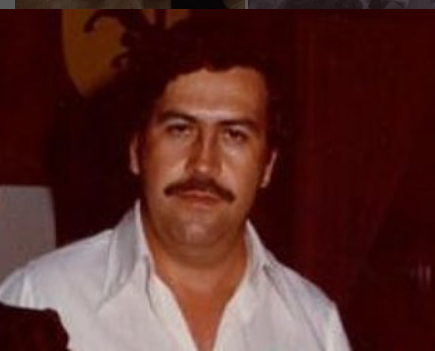Pablo Escobar is one of the most famous and notorious personalities of the 20th century. Its estimated assets of up to 30 billion euros reflect its unprecedented concentration of political and economic power as chief of the Medellín cartel, who at his peak controlled around 80% of the world trade in cocaine. Escobar led the cartel with almost entrepreneurial skills and has introduced clandestine up to 15 tonnes of cocaine in the United States every day, at a time when US President George HW Bush publicly declared the state’s enemy.

His empire had unexpected financial dimensions. Its weekly sales were estimated at $ 420 million, which corresponds to an annual turnover of approximately $ 22 billion. This flow of money forced Escobar for drastic measures: money was hidden in warehouses, buried in fields or walls in houses. Damage and decomposition of rats cost approximately 2.1 billion dollars per year, but Escobar almost carefully accepted these losses because its assets increased more quickly than it could be destroyed.
Pablo Escobar – biographical and financial data
| Category | Information |
|---|---|
| First and last name | Pablo Emilio Escobar Gaviria |
| date of birth | December 1, 1949 |
| Place of birth | Rionegro, Antioquia, Kolumbia |
| Toded | December 2, 1993 (44 years old) |
| Place of death | Medellín, Kolumbian |
| Nationality | Colombian |
| Spouse | Maria Victoria Henao |
| Nicer | Juan Pablo Escobar, Manuela Escobar |
| Occupation | Drogenbaron,, Entrepreneur |
| Nickname | The employer, don pablo, the doctor, pabito |
| Estimated active | Approx. 30 billion euros (stand Hoch phase 1989) |
| Forbes Ranking (1989) | 7th place in the richest people in the world |
| Gains per day | About 60 million dollars |
One of its regular editions, which is strange but important, is $ 2,500 per month for the elastics necessary to bring together the mountains of tickets. He is grotesque and fascinating at the same time as maintaining his cash actions was a logistical challenge. He illustrates how much money he earned – money which also allowed him to settle in the legal economy. Escobar specifically used the real estate sector, livestock reproduction and football to strengthen its influence in Colombian society and wash money.
From 1987 to 1993, the name of Escobar appeared each year on the Forbes list of the richest people. In 1989, he even took seventh place, right next to the world giants of industry and technology. The inclusion of a baron of medication in such a classification was not only a media show, but also revealed the blatant areas of the global financial system.
An incident of his escape time is particularly remarkable: Escobar burned two million dollars to prevent his daughter from freeze while he and his family hid in the frozen mountains of Colombia. The idea of a father who literally burns money to protect his family is often romantic. In fact, however, it shows above all the complete ridiculousness of a life between madness and greed for power.
The wealth of Escobar still affects society. He built social housing, football fields and schools in the slums of Medellín. He took Are sufficient And gave to the poor, which many represented him as a modern Robin Hood. However, these generous acts were well -considered investments that were made in exchange for protection, silence and loyalty. Escobar had established social structures that operated as a ghost state: effective, cruel and remarkably stable.
Escobar’s active ingredients were almost completely liquid, a flow of money which is hardly manageable – unlike modern billionaires such as Elon Musk and Jeff Bezos, whose assets are largely in stocks and investments. Unlike these technological titans, Escobar was more a symbol of destruction than innovation. The foundations of his financial power were not anxiety, violence and corruption. Even today, political and moral systems are tested by the fact that a man of such an influence was also one of the most sought after criminals in history.
Even well -known personalities such as the Colombian football player Andrés Escobar, who is not linked to him, but who was the victim of drug trade, show how the Escobar Empire has influenced Colombian society. In a fatal echo of the anterior power of Pablo Escobar, the members of the Andrés Escobar cartel would have pulled its own goal during the 1994 World Cup.
An era ended with the death of Escobar in December 1993, but its economic influence remained. Juan Pablo Escobar, his son, moved away from his criminal past and is now the author and architect under the name of Sebastián Marroquín. He also speaks openly about the immeasurable wealth of his father, the influence of corruption and the price of silence.
What has remained was the image of a man who accumulated in a coherent and brutal way, who escaped all the moral explanations. Perhaps because the story of Escobar is one of the most scandalous cases of abuse of wealth, power and violence of human history, the fascination is uninterrupted.


